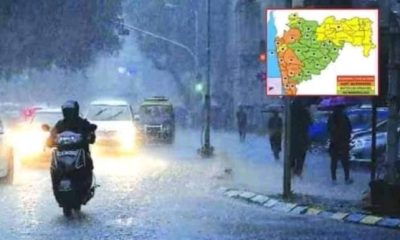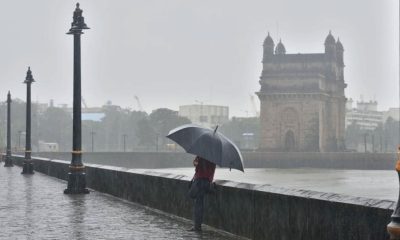Maharashtra
Thane Municipal Corporation to induct 123 electric air-conditioned buses: Mumbai
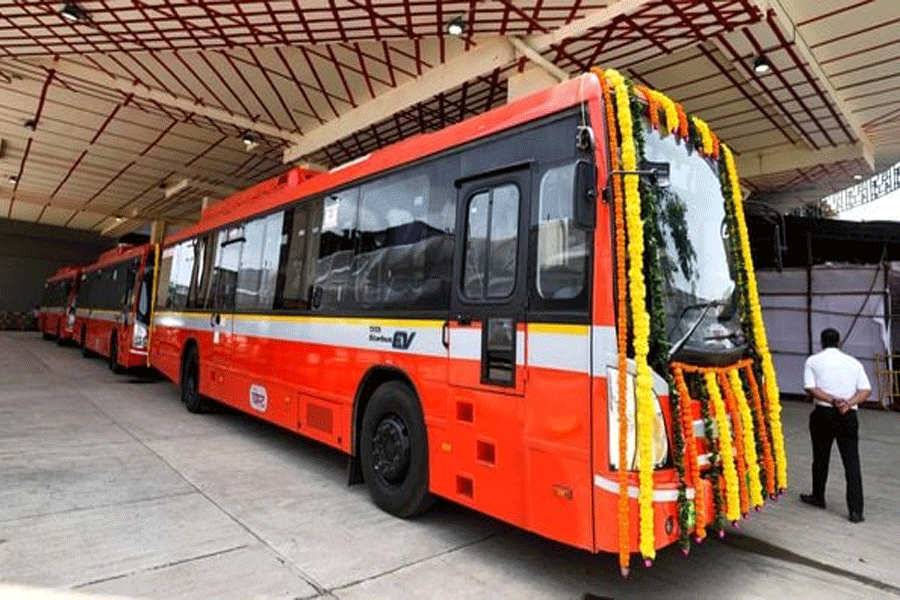
Buses will be supplied to Thane civic body in 9 months on a gross cost contract model basis for a period of 15 years, The Thane Municipal Corporation, in its move to change the face of public transportation and convert its entire fleet of buses into electric ones, has placed an order for 123 electric buses. “The undertaking is procuring 123 electric buses at a cost of Rs 185 crore. The buses will be supplied on a gross cost contract [GCC] model basis for a period of 15 years. A consortium of Olectra Greentech and Evey Trans [Evey] has received the order,” a senior TMC official said.
He added, “Evey will procure the electric buses from Olectra Greentech and they will be delivered in 9 months. Of these 123 buses, 55 will be 12-metre buses including 45 AC and 10 non-AC buses. The remaining 68 e-buses—26 AC and 42 non-AC—will be 9-metre long. The 12-metre buses will have 200-km range and a seating capacity of 39 plus driver, while the 9-metre buses will have 160-km range with a seating capacity of 31 passengers plus driver. These lithium-ion battery-run buses can be fully charged in four hours. Olectra Greentech will maintain them during the contract period.”
The civic body has recently also started work on a dedicated road for public transport buses which is scheduled to be ready by May 2023. mid-day had on September 9 reported how Thane city is setting an example and taking the lead in easing public transport connectivity by beginning the construction of the 2.4-km-long dedicated elevated road only to be used by public transport buses, including those by various municipal transport undertakings. Procuring new electric buses is an extension of this public friendly initiative.
The BEST undertaking was one of the first public transport undertakings to start this process and has already replaced 400 buses with electric ones. The BEST has begun the process of procuring 3,000 electric buses by 2023 and plans to expand its entire fleet to over 10,000 e-buses by 2025.
The buses are procured and funded under the Union government’s FAME-II (Faster Adoption and Manufacturing of (Hybrid &) Electric vehicles) initiative. Earlier on August 6, mid-day had reported how at a crucial meeting held at the BEST headquarters in Colaba, secretary of the Union ministry of heavy industries Arun Goel along with public transporters from Thane, Navi Mumbai, Kalyan-Dombivli, Pune, and the Maharashtra state transport strategised how the BEST undertaking could guide and show the way to other public transport undertakings on operation of electric buses. Goel had been on an official visit to Mumbai to review the e-bus projects in Mumbai and neighbouring cities.
The Konkan Railway, which covers 740 km and is one of the longest stretches working on diesel engines, started getting clean and green electric locomotives for national trains. The Konkan Railway Corporation Ltd (KRCL) said they would facilitate operation of four pairs of trains on electric traction with effect from Tuesday, including Delhi-Kerala and Delhi-Goa Rajdhani trains.
“The change will not only lead to a more environment-friendly move since there will not be smoke in the tunnels, but also lead to a faster journey time due to saving of time as it would not involve a locomotive change,” an official said.
The conversion to electric railway will also make train operations easier and save the cost of fuel to the tune of Rs 150 crore per year. While the foundation stone of Konkan Railway electrification, at a cost of Rs 1,287 crore, was laid in November 2015, the project was approved by the Ministry of Railways in 2016.
Maharashtra
Govandi is changing: Successful Talent of Govandi Festival filled with children’s artistic talents

Govandi: With the aim of changing the negative image of Govandi, notorious for drug addiction and crime, and providing a bright future for the children here, the Abu Asim Azmi Foundation, led by local MLA Abu Asim Azmi, has taken a big step. The foundation recently successfully organized the “Talent of Govandi Festival”, which was going on for the past one month.
The festival organized various competitions related to education, sports, skills and talents. Thousands of children from Govandi, Mankhurd, and Shivaji Nagar enthusiastically participated in more than 17 competitions, including singing, dancing, drawing, speech, mehndi, recitation, naat, handicrafts, rangoli, carom, boxing, cricket, volleyball, badminton, karate and poetry. The children performed brilliantly by showcasing their talents and hard work. The new and hidden talents of Govandi were introduced not only locally but also internationally. On this occasion, those IAS officers who added to the glory of Govandi were also honored. MLA Abu Asim Azmi, motivational speakers Sir Awadh Ojha and Sana Khan, and social media influencer Faizo among other dignitaries were present at the event. All of them encouraged the children and gave them prizes. The main objective of the festival was to encourage children to stay away from drugs and choose a better life and make their future bright, through which the talents of the children of Govindi were introduced to the whole world.
Maharashtra
Accused wanted in Madhya Pradesh murder arrested after 7 years from Dhoni
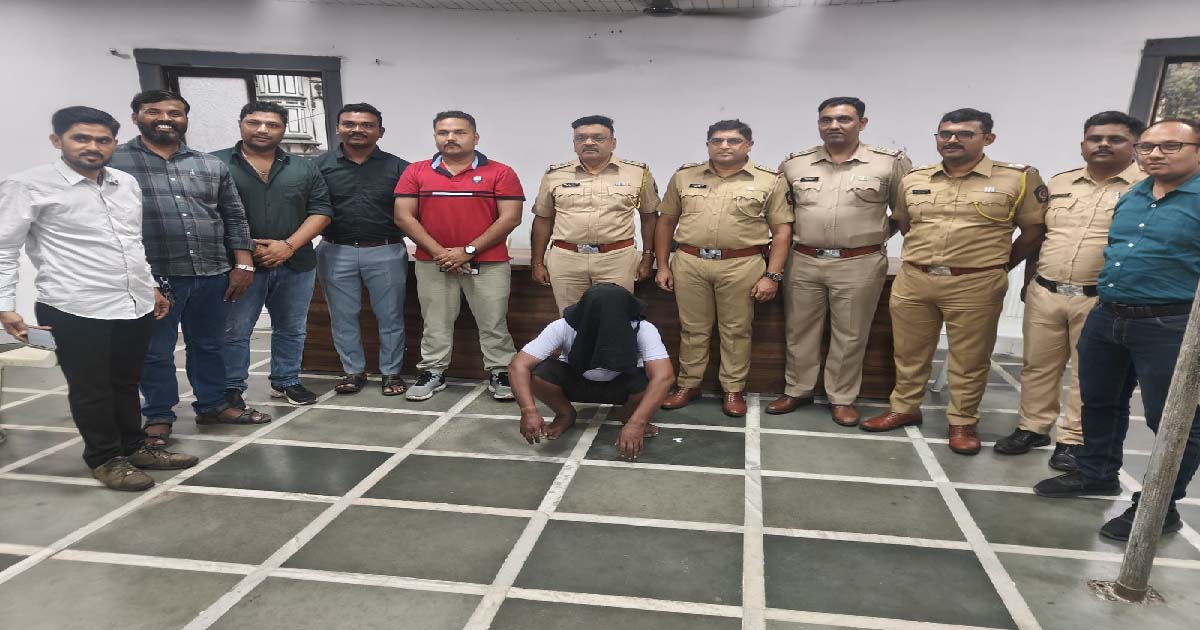
Mumbai: Paidhoni Police Station has traced the accused who was absconding for 7 years in a murder case in Madhya Pradesh and handed him over to the Madhya Pradesh Police. 6 November
From Katni district of Madhya Pradesh, Police Sub-Inspector Rishabh Singh Baghel, Dilip Kaul of Barhi Police Station informed Paidhoni Police that a case has been registered under sections 302, 294, 323, 324, 506, 147, 148 of the Indian Penal Code at Barhi Police Station, Katni district, Madhya Pradesh. The accused in this case is wanted for the last 7 years and is still hiding in the limits of Paidhoni Police Station in Mumbai, help has been sought from the police to trace him. This was informed to Hon. After which the higher officers were informed about this and the above wanted accused was searched and he was detained from the footpath near Balgi Hotel, P.D. Melo Road, Masjid Bunder East, Mumbai. Later he was brought to the Paidhoni Police Station and interrogated regarding the crime. Since there was evidence of his involvement in the crime, the said accused was handed over to the police team at the above police station, district. Katni and they took him to the Barhi Police Station. Where further investigation is underway. The accused has been identified as Raja Ram Ramadhar Tiwari, 35 years old. With the cooperation of the Mumbai Police, the Madhya Pradesh Police solved the case and the wanted accused has been arrested on charges of murder.
Maharashtra
Mumbai Weather Update: City Wakes Up To Clear Skies, Mild Breeze; Overall AQI Stays In Moderate Range At 78
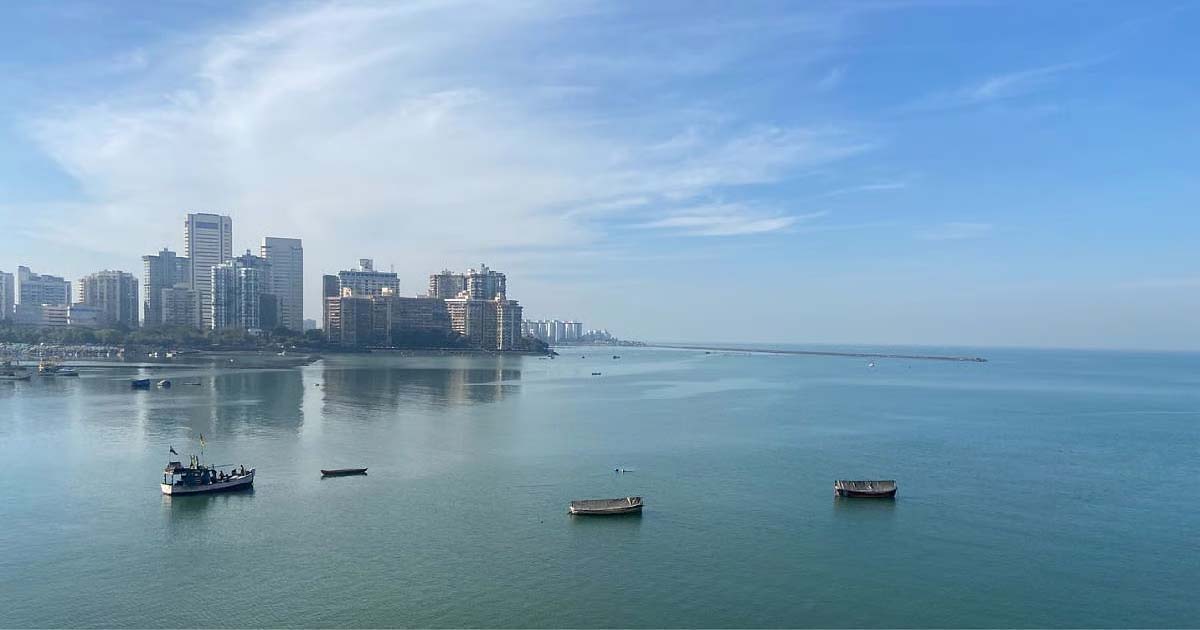
wether
Mumbai: After weeks of unsettled weather and intermittent showers, the city finally woke up to clear skies and crisp air on Thursday, marking what appears to be the end of the monsoon season. For the past two days, no rainfall was recorded across Mumbai, signalling that the retreating monsoon clouds have made way for the onset of post-monsoon conditions.
According to the India Meteorological Department (IMD), the city is expected to experience clear skies through the day, with only a minimal chance of isolated light showers or thunderstorms in select pockets. Daytime temperatures are likely to hover around 33°C, while the minimum will settle near 23°C, conditions described as pleasant and comfortable for early November.
The recent spell of short but intense showers had not only brought temporary relief from humidity but also helped wash out accumulated pollutants, leading to an overall improvement in air quality. Prior to this, the withdrawal of monsoon winds had caused a spike in pollution levels due to stagnant air and increased vehicular emissions, resulting in a hazy skyline and reduced visibility.
Fresh data released by AQI.in on Thursday morning reflected this improvement. Mumbai’s overall Air Quality Index (AQI) stood at 78, placing it in the moderate category. While the figure marks a slight dip from the good air quality recorded earlier in the week, it still represents a substantial improvement compared to the smog-filled conditions observed after monsoon withdrawal.
Residents across various parts of the city reported clearer skylines and visibly better air. Among the city’s monitoring stations, Wadala Truck Terminal recorded the highest AQI reading at 92, followed by Parel-Bhoiwada (90) and Mulund West (88). Santacruz East and Bhandup West both registered an AQI of 87, keeping them within the moderate range.
Cleaner air was observed in several western suburbs, where Kandivali East recorded an AQI of 45, falling in the good category. Malad West (59), Powai (62), Jogeshwari (65), and Borivali East (67) were all categorised as moderate, suggesting a consistent improvement across the city’s landscape.
As per AQI.in’s classification, an index between 0–50 is considered “Good,” 51–100 “Moderate,” 101–150 “Poor,” 151–200 “Unhealthy,” and anything above 200 is deemed “Severe” or “Hazardous.”
-

 Crime3 years ago
Crime3 years agoClass 10 student jumps to death in Jaipur
-

 Maharashtra1 year ago
Maharashtra1 year agoMumbai Local Train Update: Central Railway’s New Timetable Comes Into Effect; Check Full List Of Revised Timings & Stations
-

 Maharashtra1 year ago
Maharashtra1 year agoMumbai To Go Toll-Free Tonight! Maharashtra Govt Announces Complete Toll Waiver For Light Motor Vehicles At All 5 Entry Points Of City
-

 Maharashtra1 year ago
Maharashtra1 year agoFalse photo of Imtiaz Jaleel’s rally, exposing the fooling conspiracy
-

 National News1 year ago
National News1 year agoMinistry of Railways rolls out Special Drive 4.0 with focus on digitisation, cleanliness, inclusiveness and grievance redressal
-

 Maharashtra12 months ago
Maharashtra12 months agoMaharashtra Elections 2024: Mumbai Metro & BEST Services Extended Till Midnight On Voting Day
-

 National News1 year ago
National News1 year agoJ&K: 4 Jawans Killed, 28 Injured After Bus Carrying BSF Personnel For Poll Duty Falls Into Gorge In Budgam; Terrifying Visuals Surface
-

 Crime1 year ago
Crime1 year agoBaba Siddique Murder: Mumbai Police Unable To Get Lawrence Bishnoi Custody Due To Home Ministry Order, Says Report







